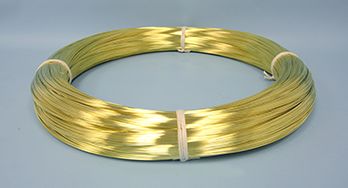After carefully selecting a stranding technique and a base metal, the next consideration is the plating option. Plating is ideal for customizing and maximizing the properties of a conductor. This finishing process offers engineers a relatively inexpensive means of combining two metals.
Plated Wire

Conductors are commonly manufactured using copper and copper-based alloys. Copper and beryllium copper wire are used because of their high conductivity characteristics. They are also a great option when you need strong mechanical performance at a reasonable price. Although there are many benefits to using copper and copper alloys, it is not enough to satisfy the needs of all applications. Many applications require properties that go well beyond what non-coated wires provide. On its own, copper is not great for solderability, contact resistance, corrosion, temperature range, and chemical resistance. To improve upon what copper alloys lack, manufacturers utilize plated wire options.
The three most used plating materials include:
SILVER
Silver offers high conductivity. It also reduces the resistance of plated wires. High-frequency applications greatly benefit from silver because the skin effect increases current flow through the straight and cut wire.
TIN
Tin is the most used material for coating copper alloys. It has a low cost and great solderability. Tin helps to improve the chemical and corrosion resistance of the final product. The material also has a relatively low melting point when compared to the other two materials.
NICKEL
Nickel offers great resistance to high temperatures, and its operating temperature range increases as the thickness of the plating increases. Nickel is resistant to corrosion and harsh environments. It is a hard material, which means that this is not a great option for soldering. If you need to solder this plated material, it requires an activated flux.

 Technical Data
Technical Data


